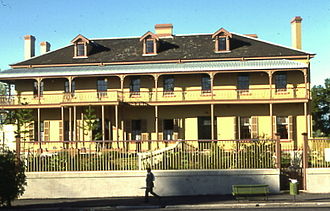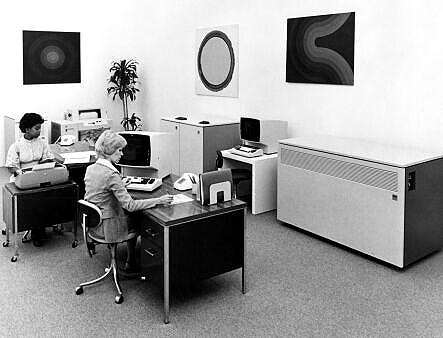One of the real gems for Australian researchers has been Trove. In its own words:
"Trove is a discovery experience focused on Australia and Australians. It supplements what search engines provide. If you are researching in the fields of the social sciences, literature, local or family history, or need inspiration for your school assignment, then this is the tool for you."
"Trove is the National Library of Australia's flagship discovery service for the public. It supports the discovery and annotation of items in Australian collections. The term "Australian collections" encompasses libraries, archives, university repositories and major online collections such as biographical databases, digitised book collections and digitised newspaper collections."
 |
| Grandparents' Wedding [1] |
I've used it extensively to get all sorts of information about family. I've found game reports from cricket matches of the early 1900s, wedding reports of grandparents and great aunts, the drowning of a great great uncle, and discovered a relative who disappeared under one name to appear under another. This type of information has greatly enhanced the family tree by providing colour and background to the raw data of births, deaths, and marriages.
Trove also allows (and encourages) you to submit corrections to the optical character recognition process that creates transcripts from the text images. There are thousands of contributors, including me, that have provided hundreds of thousands of updates to the site.
In addition to family research, just reading the old newspapers is fascinating. Reports filed during World War 2 have a real sense of immediacy and urgency than a history text book.
Trove has also allowed me to have some great fun.
A couple of years ago, as a devoted reader of the Sydney Morning Herald, I came across an item in Column 8 (a section devoted to weird and amusing readers' questions and observations). In this particular item a reader had recalled a memory from the 1940s when, as a child, he overheard someone talking on a public 'phone. All he recalled from that snippet of conversation was the telephone number "FL3289".
As a past contributor to Column 8 I decided I'd see how far I could get tracking down information about that number. My tool of choice was Trove given its vast archive of Australian newspapers that go back to the early 1800s.
By using the 'phone number as the search keyword I was presented with a few pages of hits, most of which were misses but one, a classified advertisement for a car, seemed to hit the mark. I contributed the information to Column 8 who published it:
| 1938 Dodge D8 - credit Alf van Beem |
We have to hand an astonishing piece of research, undertaken by Neale Ferguson, of Leesburg, Virginia, into the mysterious phone number FL3289 (Column 8, for some days): ''From the Herald of Saturday March 16, 1940,'' Neale quotes, ''in the section 'For Sale. Motor Cars, Lorries, Etc.: DODGE 1938 D.8. 7-Passenger Sedan, driven by owner only, dark blue duco. Great opportunity for private hire businessman. Registered for 12 months with H.C. Plate. No dealers. 1 Ormond Street, Paddington. Phone FL3289.'''
Using the address information I attempted to find out about the possible seller of the Dodge and the owner of the FL3289 telephone number. Trove came up with a number of candidates. I chose the most likely of these and (again) submitted it to Column 8 who printed it the next day:
The game was afoot! Neale dug deeper: ''A search of this address shows a death notice in the Herald from Wednesday, December 7, 1949: 'CUTHBERT, Alexandra [sic] - December 4, 1949 of 1 Ormond St. Paddington, beloved husband of Maria, aged 73. Privately interred, Botany Cemetery, December 6, 1949.' NSW Births, Deaths and Marriages lists his name as Alexander, possibly the son of John Thomas Cuthbert and Amelia White (m. 1859). He married Marie Saunders in 1920. The 1943 and 1949 Electoral Rolls lists his occupation as a 'Houseman' and hers as 'Home Duties'. Hopefully, this is not just sticky-beaking and is C8PhD-worthy!''
''Further to my email linking the phone number FL3289with the address of 1 Ormond Street, Paddington,'' adds the diligent Neale Ferguson (Column 8, yesterday), ''this address turns out to be the site of Juniper Hall, originally the home of Robert Cooper, a gin distiller. He designed the house himself and had it built circa 1825. It appears the location may have been used for flats around the time in question.'' Ah, it all falls into place. This impressive building still stands, across the road from the Paddington Town Hall.
Juniper Hall Paddington
A search of Trove also revealed a large number of articles about the property and its owner, including some correspondence from Robert Cooper in the 1820s.
Following another exchange or two with Column 8 they bestowed the C8PhD title upon me. Better still was the original author of the FL3289 question had been following the exchange and contacted Column 8 to wrap things up:
Following another exchange or two with Column 8 they bestowed the C8PhD title upon me. Better still was the original author of the FL3289 question had been following the exchange and contacted Column 8 to wrap things up:
''I am completely gobsmacked,'' sputters John Martin, of phone number fame. ''Arising from my mention in Column 8 a few days ago, of the phone number FL 3289, which I overheard being repeated in a public phone box over 70 years ago and still strangely remember, the following has transpired. Thanks to the amazing research conducted by Neale Ferguson, who clearly hasn't got a real job, I now know that the number FL 3289 was that of an Alexander Cuthbert. I also now know his wife's name, where they lived, when he died and where he is buried. I even know what type of vehicle he drove and when he sold it. In addition to all this, since explaining that my remembering of the prefix FL was based on the initial letters of a schoolmate of the time at Drummoyne Primary, Frankie Lampard, I have since been contacted by a Rod Moffet, who was also a contemporary of ours at Drummoyne Primary. Rod has sent me a class photograph from 1941 in which Frankie Lampard is in the front row. Column 8 certainly works in mysterious ways.''
Trove really is an Australian National Treasure, one that puts the history of the nation as close as a URL.
Citation
Citation
- WEDDING BELLS FERGUSON—KOBOROFF. (1939, April 20). The Biz (Fairfield, NSW : 1928 - 1954), p. 3. Retrieved May 1, 2014, from http://nla.gov.au/nla.news-article76294816
















































